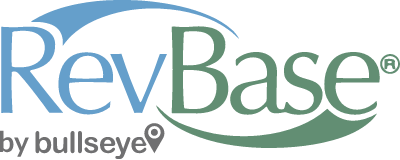
Let’s say you’ve concluded that you need a marketing asset management system to manage, streamline, and communicate your marketing materials to the many audiences that need them. Great! Now it’s time to think about how you’re going to get your colleagues on board. How to make the business case. Basically, how you’re going to sell people in your organization on committing to this new asset management system.
We all know change is challenging. When existing processes are questioned, some people may think the current way of doing things is good enough. Perhaps there’s an existing system to manage your marketing assets, and people who installed the software are pushing to keep it while you’re hoping to improve important aspects of your marketing and sales functions.
But here’s something most marketers know: We have to keep evolving. It’s essential to embrace new tools and fresh approaches, to protect the brand, to be more efficient, to keep up with an expanding workload, and to stay competitive.
Where champions of marketing asset management begin.
Championing a marketing asset management project in your company begins with a vision statement. This vision should include where you expect the system to be two, three, or four years down the road. You’re investing in a piece of infrastructure, so you want to have a clear perspective on where it will put your organization in the future.
It’s useful to articulate specific goals. For example, by a certain period of time, your organization will reduce the volume of inquiries from the field by X%. Or you’ll eliminate print waste completely. Or reduce cycle time on updates to the field by 75%. Whatever it is, you should have a big, bold, and clear statement on where you want to go. This allows you to start having meaningful conversations with the audiences that will be involved with the project, and help them identify gains to be realized by implementing a marketing asset management system. So let’s take it department by department.
Have the right conversations.
When it comes to the choice of a system to manage, distribute, and control marketing assets, one of the most important departments is, of course, marketing. This could include marketing communications, product management, market segment management, trade show management – all the various facets of marketing. The goal is to have the marketing team identify operational efficiencies, hard dollar savings, and capabilities they will achieve by having the marketing asset management system.
These conversations typically involve identifying current processes for managing and sharing information and communicating it out to the field – and articulating any problems, gaps, or areas where people feel things can be done better.
Your marketing team probably has a pretty good handle on what they’d like in this regard, because they’re dealing with it every day. One of the most useful things to do is inquire about specific processes, problems, and opportunities marketers see that will be addressed by using marketing asset management.
You want to communicate broadly: to have this conversation not only with local marketers but also field marketers and other marketers across global operations. Because they too will benefit and may be paying some of the highest prices right now for lack of an optimized system.
Another critical audience to speak with and get input from on is sales reps. Most sales professionals love to identify things marketing could do for them! So it should be fairly easy to have conversations with reps on how they’d like information made available, how marketing can help them be more efficient, how they can work as partners in marketing to help protect the brand, and how they can coordinate more closely with you. By the way: this conversation alone – to bridge the gap between marketing and sales regarding the content marketing strategy and sales function – is a major benefit of marketing asset management.
It’s common for sales reps to identify a number of areas where they can be more efficient, where they can better serve customers, and where they can save time with easier and more robust access to information. Sales professionals could become some of your best partners in getting this system up and running.
Another group to consider is your web team. Marketing asset management at some point probably will integrate with your public website and e-commerce sites. So it’s useful to connect with your web team because they’re consumers of marketing assets who will benefit from easier access to the content they put on their sites.
What’s more, another important group – and one that should be brought into this early on – is your IT department. They need to be involved because of concerns such as security and adherence to certain corporate standards. There may be conversations regarding single sign-on (SSO) for access to the marketing asset management system. IT will want to understand your vision. They may have questions and help you flesh out your thinking regarding data security, reliability, and the overall architecture that will allow for integration of data with other systems.
By having these conversations, you develop a robust set of talking points about how the marketing asset management system will assist people in their daily roles and fulfill your vision statement.
Make a modest investment in a prototype.
After the initial conversation phase, it’s useful to work with your chosen supplier on a prototype. We recommend taking a couple dozen assets and building a prototype within the marketing asset management system. Why? Because it’s a very modest investment – and one that won’t require much time or risk.
Another good reason for prototyping is people react to something demonstrable: something they can look at on a screen, rather than rely on a PowerPoint slide or document. Having something visual is very useful to provide a clear view, and to flesh out other ideas about the marketing asset management system and generate helpful questions you may not have considered up until that point.
With the prototype in hand, you’re able to have meaningful conversations with your marketing asset management system vendor on various phases of the project and how you see the rollout of the system. You can start discussing the project scope. You’ll want to have a good, solid, aggressive plan for the first phase. It’s important to deliver demonstrable value even if it doesn’t have all the capabilities of your long-term vision.
We highly recommend identifying solid phase one deliverables. To get there, your vendor should be able to work with you to scope this out, put a price tag on it, and provide a timeline. Then, as it’s implemented, you can start identifying follow-on phases that might involve expanding to other groups, adding more assets, and installing other capabilities that ultimately fit into your vision.
Create a service level agreement.
Something you’ll want to use as a selling tool is a service level agreement (SLA). It’s essential to have one that clearly identifies what you’re getting, how much you’re paying for it, and responsibilities you and your vendor have to make the system work.
When it comes to SLAs, the more detailed the better. Obviously, if there’s anything in the agreement you wonder about, it’s a good idea to question it right away and get it resolved to your satisfaction. You’re hopefully going to be working with this partner for many years and relying on this system for a critical piece of your marketing operation. So you want to make sure you have a good, solid service level agreement in place with your vendor.
Having a robust SLA is actually a very good selling point for all other departments. You’ll undoubtedly need that when you go for legal approval or ask the purchasing department to spend money on the system. With this agreement in place, you should be well on your way toward a successful implementation that positions you as a change agent who moves the organization forward in a very meaningful sense.
To download our complimentary white paper, “10 Signs You Need Marketing Asset Management,” click here.
